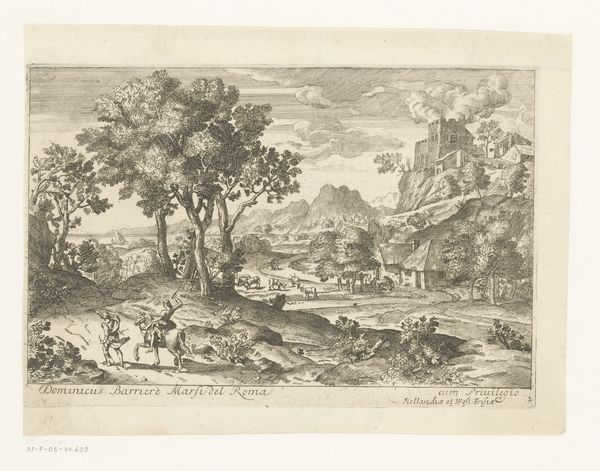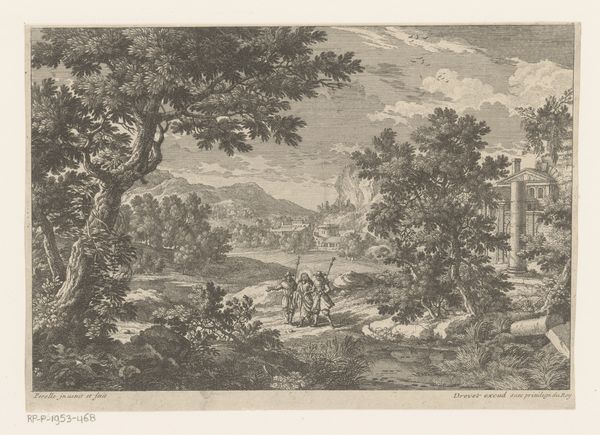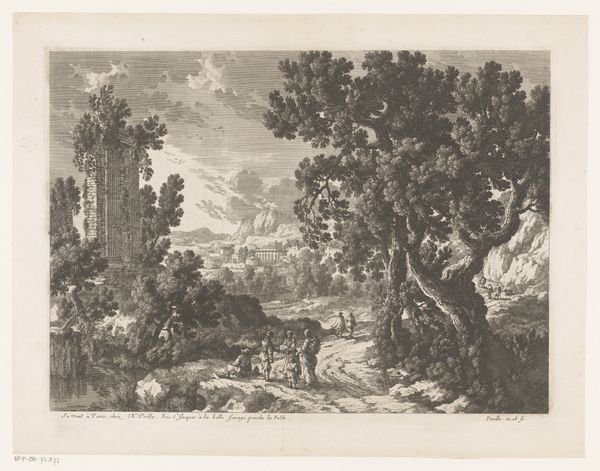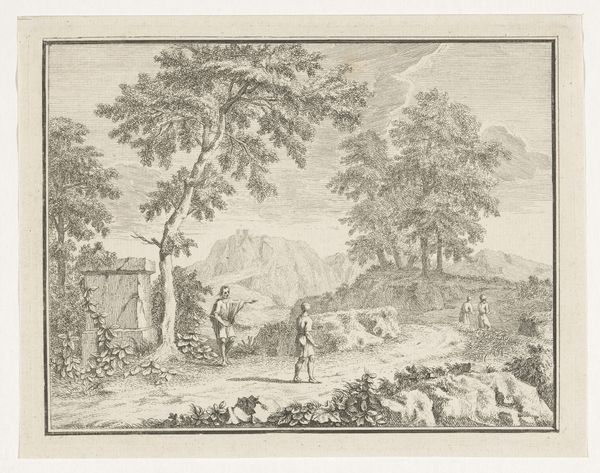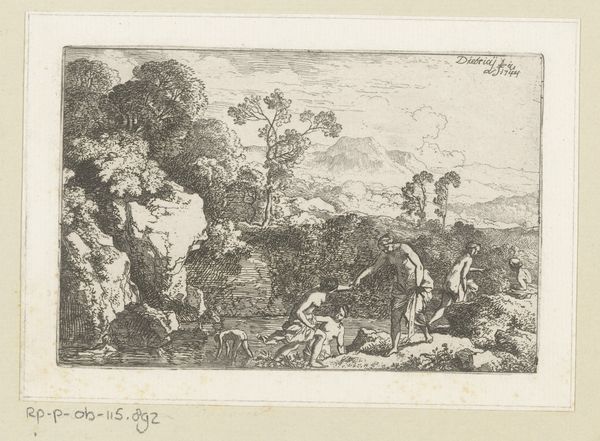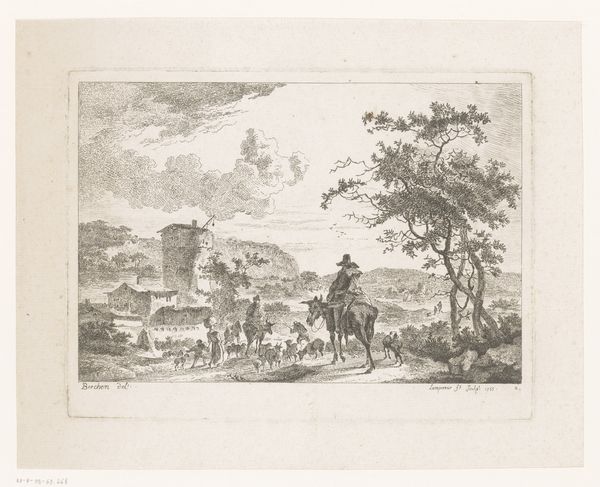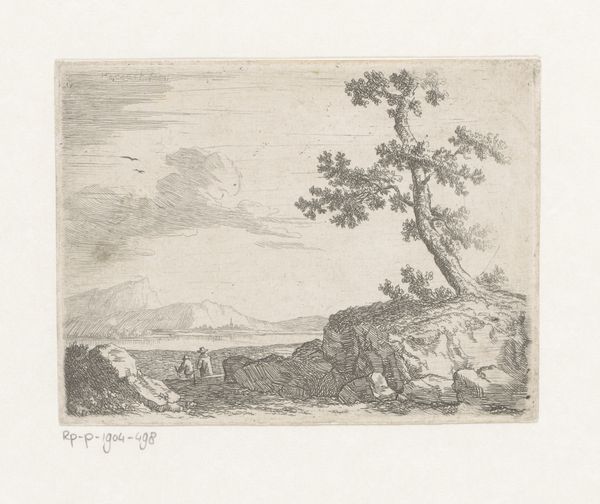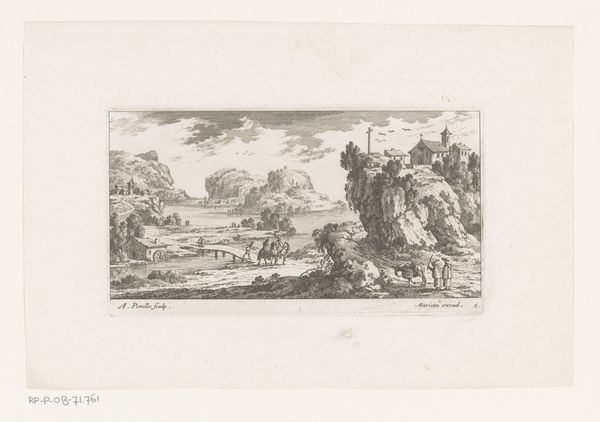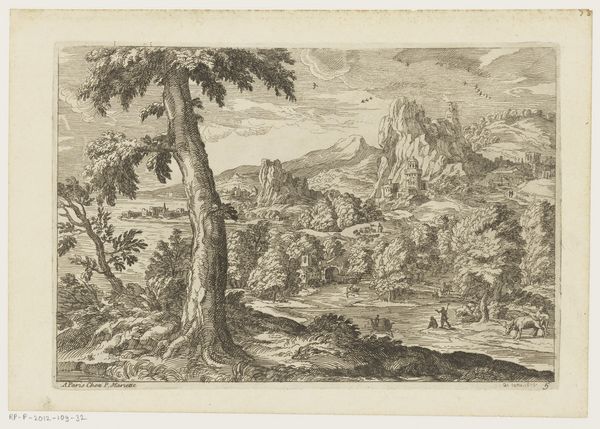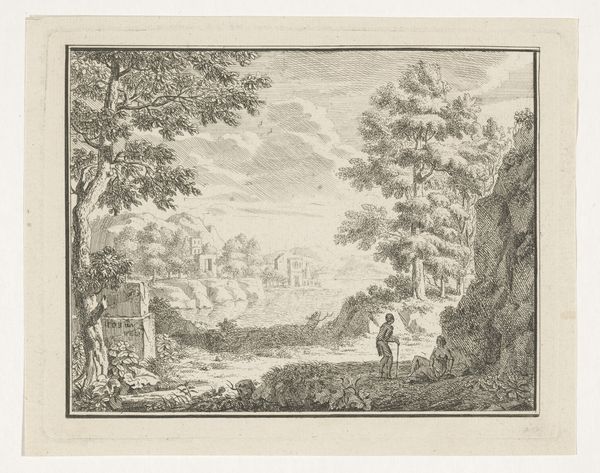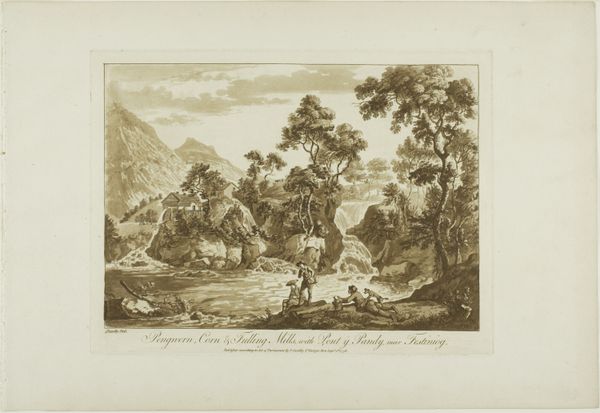
drawing, etching, paper, ink
#
drawing
#
etching
#
landscape
#
etching
#
paper
#
ink
#
romanticism
#
mountain
Dimensions: height 145 mm, width 208 mm
Copyright: Rijks Museum: Open Domain
Curator: This etching, “Ezeldrijver in een kustlandschap,” which translates to “Donkey Driver in a Coastal Landscape,” was created in 1811 by Pierre François De Noter. Editor: There's such a stark contrast between the delicate, almost lace-like rendering of the tree on the right and the somewhat harsher, more angular lines used for the ruined tower and mountains in the background. It creates an interesting tension—a sense of decay juxtaposed with natural growth. Curator: Indeed. The imagery presents several archetypes typical of the Romantic movement. Notice how the ruined tower can be interpreted as representing the transient nature of human endeavors, particularly when compared to the natural grandeur suggested by the distant mountains. What do these symbols represent within a context of the era's sociopolitical changes? Editor: It's impossible not to consider it within the Napoleonic context. De Noter was working during a period of significant political upheaval in the Netherlands, and such a stark landscape, combined with a crumbling tower, speaks to ideas of societal decay, and the vulnerabilities of structures, of governance. It echoes a romanticized ideal of a simpler existence, as embodied by the peasant with his donkey. Curator: Absolutely. Consider, too, how the tree, firmly rooted and reaching upward, serves as a symbol of resilience and continuity. Even the donkey driver evokes biblical themes of humility and labor. How would it contrast, do you think, with other imagery of the era depicting opulence and nobility? Editor: Radically. We see this figure, small within the grandeur of the landscape, but still central to the composition. There is labor happening within this ruined world. De Noter subtly subverts the typical power dynamics seen in art, by focusing on the life that carries on, despite ruin, despite upheaval, and who contributes to what comes next. The small boat at sea perhaps offers an alternate vision for this future. Curator: Precisely. The imagery contains a message of strength and continuity, told via careful selection of symbolic forms. And the donkey becomes an unlikely, but powerful representation of progress and adaptation. Editor: It pushes me to consider who builds and rebuilds after every collapse, both literal and metaphorical. I’ll hold that message close.
Comments
No comments
Be the first to comment and join the conversation on the ultimate creative platform.
